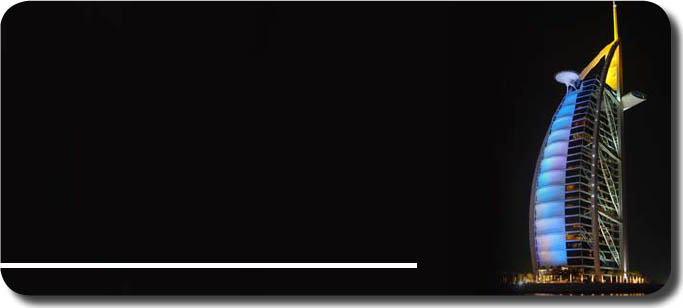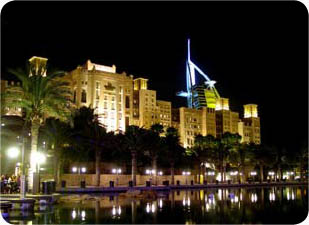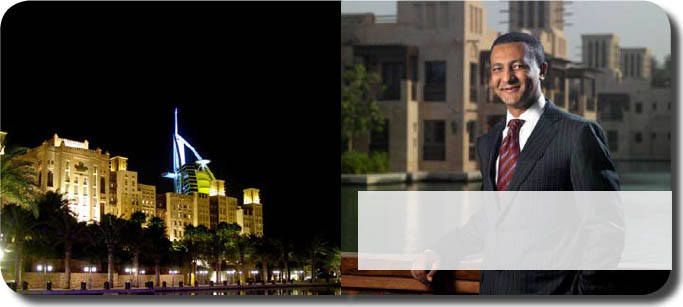
Jumeirah Group |
|

On
CLOUD
JUMEIRAH
The Jumeirah Group has seen exponential growth in recent years. However, while the organisation’s property portfolio has expanded, its IT infrastructure has remained much as it was last time it was overhauled. Now with cloud and other technologies available, Jumeirah has jumped in feet first... |
Arabian Computer News - June 2011
The growth of the Jumeirah Group has been reflective of that of its home city of Dubai; fast, energetic, and confident. The company now has hotels in London, New York, Shanghai, and the Maldives, in addition to some of the most famous hotels in Dubai, including the Madinat Jumeirah, Jumeirah Emirates Towers, and the iconic Burj Al Arab.
However, that rapid growth proved to be a mixed blessing for the hospitality group. While the business managed to grow rapidly, opening up new hotels and expanding into new territories, the company’s IT infrastructure was rapidly approaching its capacity.
At the time, the group was using distributed datacentres. However, while the strategy had served it well during its initial growth stage, the issues that come with infrastructure of that type had began to reach a point where they would soon start showing. The beginning of 2011 was the date the company believed its IT infrastructure would reach such a point.
As such, the company set out to devise a new strategy that would define how its IT infrastructure would be structured going into the future. “The objective was clear,” begins Jumeirah Group’s group director of information technology, infrastructure, and IT operations, David Teklit.
“The aim was to transform the IT infrastructure, addressing such issues as building internal clouds, virtualisation and automation, storage and information lifecycle management, datacentre networking, high availability, datacentre consolidation, energy efficiency, and business continuity and disaster planning,” he continues.
The main issue for the Jumeirah Group was that the previous best practice for IT infrastructures had been too rigid, which was why it was hitting a wall with its then infrastructure. The best solution in the eyes of Teklit and Jumeirah Group was a cloud-based IT infrastructure, rather than the traditional method of siloed solutions and building up its infrastructure when it was running out of capacity.
The first step for Jumeirah’s board was for Teklit and the other senior members of the IT group to get together and come up with a new strategy for tackling how the company would implement a cloud-based infrastructure. “We had to customise a datacentre strategy according to business plans, regulatory requirements, skills availability, and also the rapidly changing nature of the technologies,” he explains, with a hint of resignation about the pace of the industry.
One facet of that new strategy was reducing the company’s overall IT footprint where possible, without impacting the quality of the service provided to the group’s various business units, and customers.
“Consolidation was important, not just to reduce costs, but to make the infrastructure more agile and efficient, to improve operations, and to enhance disaster recovery. “Consolidation didn’t just involve servers and datacentres though,” he adds. “It involved every major system that makes up the group’s infrastructure. The focus was to shift to continual infrastructure refinement [as opposed to periodic overhauls], because, after all, this is a ‘never ending story’.”

During the process of its strategy review, the company identified two possible strategies. One would see it invest in its own datacentres, building up and maintaining its own infrastructure, while the other was to bring in an outside partner to co-locate its services, creating a hybrid cloud.
“Building a new datacentre would have been a multi-million dollar investment for us,” admits Teklit. “After some financial analysis to see whether [building our own datacentre] provided a better return than using a hosting company, an informed decision was made to choose eHosting DataFort as a co-location partner.”
202
The total number of rooms in Jumeirah Group’s iconic Burj Al Arab Hotel.
598
By contrast, the Jumeirah Beach Hotel has almost three times the rooms.
60
The number of hotels the group anticipates operating by the end of 2012.
16
The number of countries the group operates hotels in.
Source: Jumeirah Group

“The aim was to transform our IT infrastructure, addressing such issues as building internal clouds, virtualisation and automation, etc.”
David Teklit
Group Director of Information Technology,
Infrastructure and IT Operations,
Jumeirah Group
CUSTOMER HOSPITALITY
The specific needs of the Jumeirah Group meant that some very strict criteria would have to be met by the eventual partner. Just how far eHosting DataFort was willing to go to help Jumeirah Group meet those goals were extraordinary, including redesigning its own datacentre to facilitate the hospitality group. The result was a very happy customer.
“We are very pleased with the implementation,” comments David Teklit, Group Director of Information Technology, Infrastructure and IT operations at Jumeirah Group.
“eHosting DataFort met our unique requirements, which needed eHDF to change their datacentre design. Our processes require high density of power and cooling, and therefore huge effort was required from eHDF to make core design changes [to its facility],” he adds. “The project outcome was exactly how we planned it to be. Planning was very detailed and the project was managed based on the Jumeirah Project Management framework.”
However, the process of selecting eHosting DataFort as its co-location partner wasn’t easy, explains Teklit. “After extensive research on who were the large players in the market, their capabilities and after we built our detailed requirements, we created a framework and a methodology by which we could make an informed decision on which co-location provider would be right for us.”
“The key reason for choosing eHosting DataFort for this project was to convert capital expenditure to operating expenditure by choosing a lease model, as opposed to building a new datacentre ourselves. This helped us to preserve cash, enabled a faster time to market and lowered operational risks, while still helping us to deliver new projects and business requirements,” he adds.
There was also a facilities management and cost angle to the decision, reveals Teklit. “It became apparent that to maximise the use of best-of-breed technologies, such as blade servers, we would need to push the limits on power and cooling. In this area, eHosting DataFort stepped up to the challenge and was able to present a cutting edge power and cooling solution needed for high density equipment footprints,” he adds.
The change in strategy times with a major expansion in the company’s property and service portfolio. Jumeirah currently has plans to grow to 60 luxury hotels and resorts around the world by 2012. The United Arab Emirates, Jordan, Qatar, Kuwait, Egypt, Morocco, Maldives, Thailand, China, England, Spain, Germany, Azerbaijan, the Caribbean, Panama and the US Virgin Islands are all countries that will have hotels and resorts present by the time the company’s ambitious expansion goals are met.
According to Teklit, the agreement between Jumeirah and eHosting DataFort has allowed the company to do more with less, align the company’s IT infrastructure with its business goals, and adapt it quickly when the need arises. It has also given the company a much clearer return on investment, allowed it to consolidate and centralise its IT infrastructure in a way that wasn’t possible with its previous solution, and allowed it to embrace new technologies more quickly, and cost effectively.